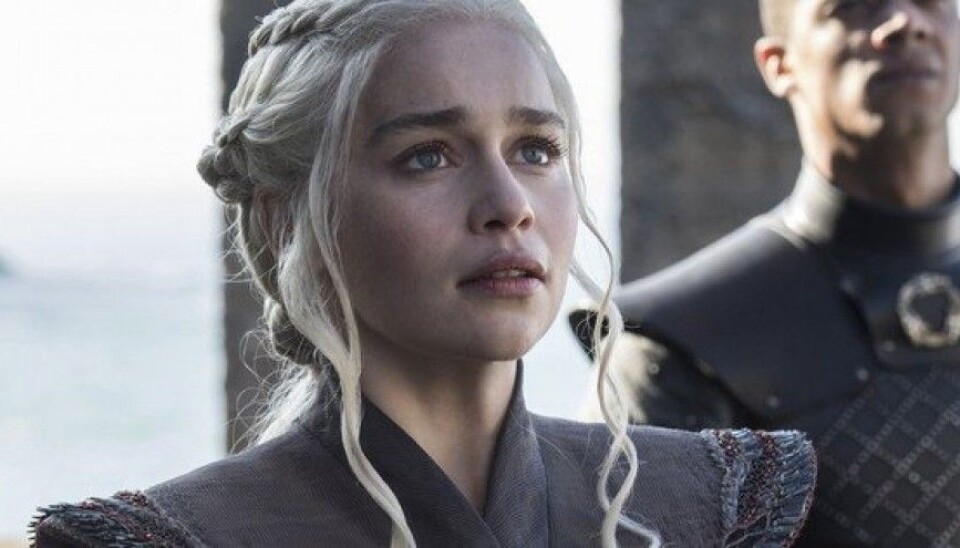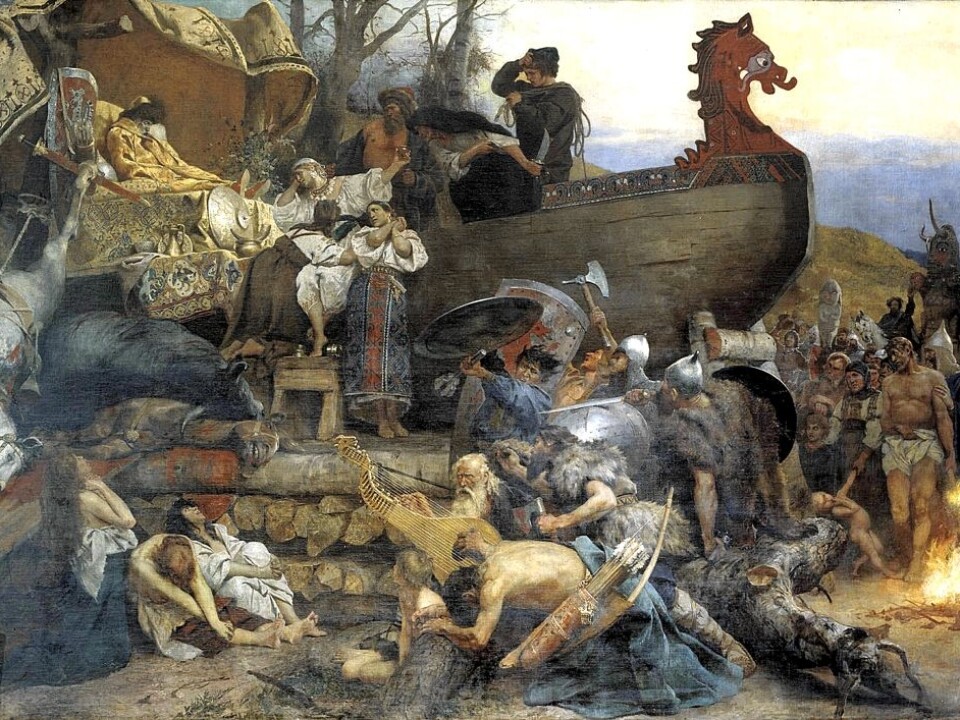
Was rape common in the Middle Ages?
TV shows such as "Game of Thrones" on HBO and "Norsemen" depict rape as having been commonplace in the past. But is that correct?
Blame the Italians: During the 1400s and the bloom of the Renaissance in Italy, people created the perception that the Middle Ages was a dark period in history.
They used the name the Middle Ages to describe the long period between golden antiquity that ended with the fall of Rome around the year 500 and their own Renaissance (which literally means rebirth).
Today, we are still telling the same stories that they told of a dark period of a thousand years.
Part of this dark image of the Middle Ages is the idea that it was full of sexual abuse.
Tracking rape in the Middle Ages
"If we look at Scandinavia, there is no evidence that rape was more common in the Middle Ages than in the two centuries that followed, the 1500s and 1600s," says Fredrik Charpentier Ljungqvist. Ljungqvist is a historian at Stockholm University and has conducted two separate studies on rape during the Middle Ages.
Hans Jacob Orning is an expert in the Middle Ages from the University of Oslo. He points out that researchers would have found far more evidence of rape in the extensive literature we have from the Middle Ages, if it had been common at that time.
“The culture of the Vikings and the Middle Ages was a culture of honour,” he said. "Women were an integral part of this culture. Raping a woman would not only have been an assault against her, but also against the community around her.”
Indeed, rapists were subject to the strictest possible punishment under the law of the time. Rapists were wanted criminals.
“If you had raped a woman, anyone could kill you without risking punishment themselves,” Orning says.
Over 50 sexual assaults
“Game of Thrones” is an American television series based on the books "A Song of Ice and Fire" by the author George R.R. Martin.
The first season was shown in 2011, and when the fifth season ended in 2015, most of the lead female characters, including Sansa, Cersei Lannister, Daenerys Targaryen, Meera Reed, Gilly, and 24 other women had either been raped or subjected to an attempted rape.
Of course, “Game of Thrones” is a fantasy. But the author of the books on which the series is based, George R.R. Martin, has clearly said he was inspired by what he believes must have been a very brutal medieval period.
A blogger who calls herself “Tafkar” follows the series and tallied the number of rapes and attempted rapes she saw in the series. She counted just over 50 by 2015. She also notes, however, that in Martin’s first five books, there are over 200 portrayals of rape and attempted rape.
"Norsemen", which is being shown in the US on Netflix and on NRK in Norway as “Vikingane”, is a comedy. But here the humour repeatedly plays off the idea that sexual abuse must have been very common in medieval Norwegian Viking communities.
Based on history
George R.R. Martin has been criticized for all the rapes he uses as literary devices in his books.
He has also been criticized for using sexual assault almost exclusively to develop his male characters. The women are merely victims. In an interview, The New York Times asked Martin why he includes so many rapes and other acts of sexual violence in his books.
Martin answered that he was depicting reality, and that this was what it was like in the Middle Ages.
“An artist has an obligation to tell the truth. My novels are epic fantasy, but they are inspired by and grounded in history,” he told the Times. “To omit them from a narrative centered on war and power would have been fundamentally false and dishonest, and would have undermined one of the themes of the books: that the true horrors of human history derive not from orcs and Dark Lords, but from ourselves. We are the monsters.”
Unlikely to have been common
Stockholm University’s Ljungqvist says that rape was such an extremely serious crime in the Middle Ages that there is little evidence that it was common.
"We also have to remember that the Catholic Church had a strong grip on the Nordic region during most of the Middle Ages. The Church considered all extramarital activity as something criminal,” he said.
Ljungqvist has also searched for reports of sexual assault in the Icelandic saga literature. The Icelandic Sagas also offer a window on conditions in Norway at that time. They are often about people during the Middle Ages and the relationships between them.
"Sexual assault rarely occurs in the Icelandic Sagas,” he said. “When it does, it is usually in the context of feuds and warfare. Sexual assault was committed against enemy women as a part of warfare, to dishonour other men.”
The rapist was killed
According to Hans Jacob Orning, the expert on the Middle Ages from the University of Oslo, written sources that tell of sexual assaults during the Middle Ages usually tell of assaults connected to men wishing to violate other men.
“During Viking raids and in other settings where one didn’t risk too much, rape was probably also used to violate women. But with the honour culture that was prevalent during the Viking Age and also later in the Middle Ages, it would be an incredibly unwise thing to rape a woman at home in Norway”, he said.
In the Bagler Sagas there is a story about something the researchers believe may have been a rape. The Bagler Sagas were written down shortly after the events took place and are recognized as a form of eyewitness accounts.
The man who commits the rape is killed, even if he belongs to the upper classes in society.

What about slave women?
Both Orning and Ljungqvist note that we know very little about the lives of some of the people who lived during the Middle Ages.
“Was it rape if you forced a slave to have sex with you during the Viking Age? Today we would of course answer yes, but during those times they may have had a different view. As a slave was owned by the master, legally speaking this meant that the master had the right to dispose of the slave as he saw fit, and logically speaking this would include intercourse”, Orning says.
He adds that this is something about which we know very little today, whether it happened or not.
Hans Jacob Orning also reminds us that slavery was not widespread in the Nordic region after the Viking Age.
Slavery in the Nordics disappears early on during the Middle Ages.
Further into the Middle Ages however, parts of Europe developed into feudal societies, primarily in countries such as France. These were societies based on great differences between people.
Whether or not Norway was a feudal society during the Middle Ages has been disputed among historians. According to Orning, most of his colleagues today would say that this was not the case.
Brutal traditions are known from some parts of feudal Europe, such as the feudal lord having the right to sleep with the woman that his serf marries on the first night.
“This is of course a very brutal custom seen with our eyes”, Orning says.
Historians do not have any evidence that this was widespread in the Nordics.
What of the mistresses?
“Then you have things like frillehold. That kings, nobility and other powerful men often had an extra ‘wife’, what we today would call a mistress”, Orning says.
This would of course entail an uneven power relation between a man and a woman. But these mistresses were often quite resourceful. The relationships that the powerful men had with mistresses during the Middle Ages often meant clear rules of commitment, also for the man, the historian notes.
- RELATED: According to professor Anne Gjelsvik and colleagues from NTNU in Trondheim, reactions from the fans may have caused newer seasons of Game of Thrones to become less sexualized and violent. Read more in this article produced and financed by NTNU: Less violence against women in Game of Thrones
References:
Fredrik Charpentier Ljungqvist: “Rape in the Icelandic Sagas: An Insight in the Perceptions about Sexual Assaults on Women in the Old Norse World”, Journal of Family History, 2015. Summary
Hans Jacob Orning: “Feuds and conflict resolution in fact and fiction in late medieval Iceland”, in Steinar Imsen (ed.): “Legislation and State Formation. Norway and its neighbours in the Middle Ages”, Akademika forlag, 2013
Blog post: “Rape in ASOIAF vs. Game of Thrones: a statistical analysis” and “A Song of Ice and Fire has a rape problem”.
The New York Times: “George R.R. Martin on ‘Game of Thrones’ and Sexual Violence”, May 2014. Interview
------
This article was updated on November 23 2021 in order to rectify some mistakes which occurred in the translation. The last three paragraphs have also been translated from Norwegian and added.

































